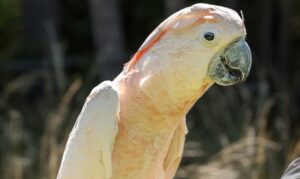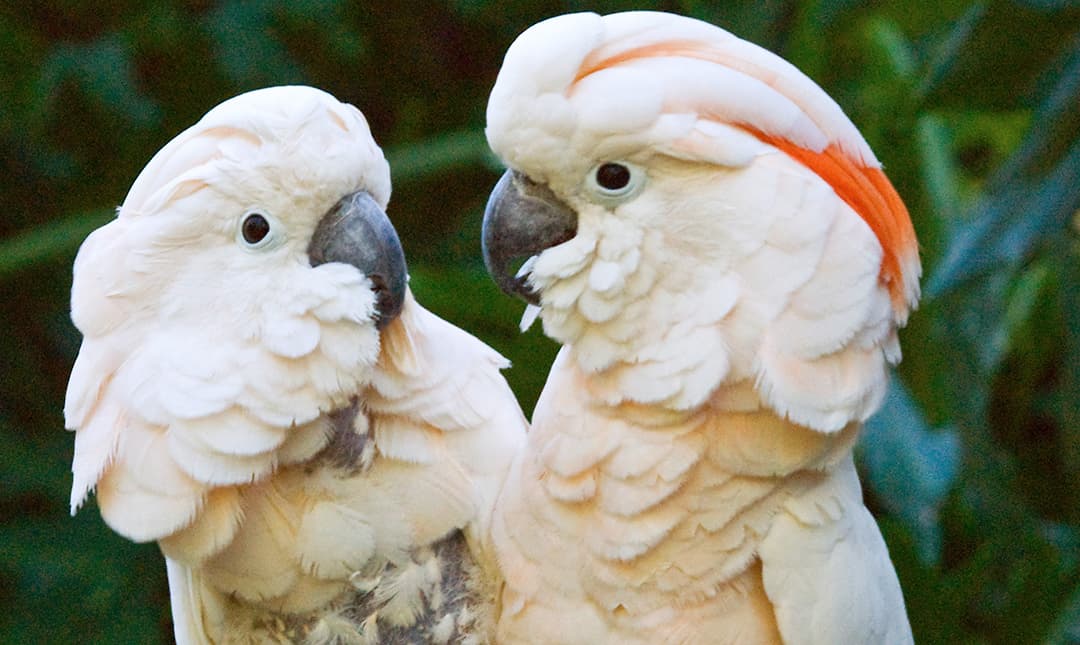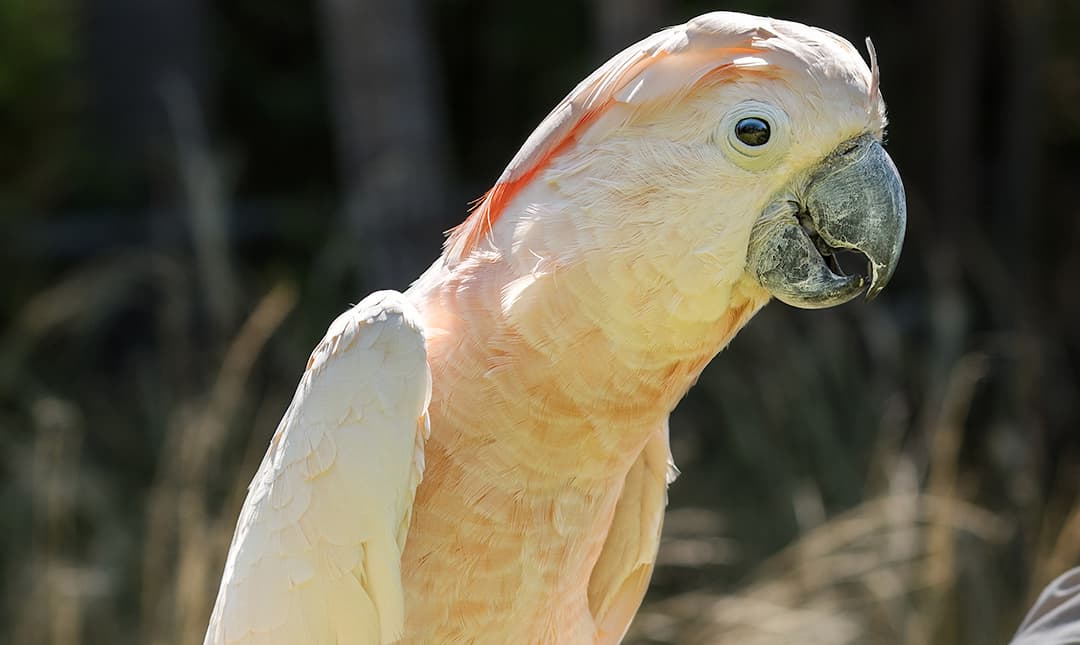About
Cockatoos belong to the Psittacid family of birds, which includes parrots, parakeets, lorikeets, love birds, and macaws. There are about 21 species of cockatoos, including the salmon-crested cockatoo (also known as the Moluccan cockatoo) from Indonesia. The salmon-colored crest or ridge of feathers on top of the head rises when the bird is threatened or excited.
Salmon-crested cockatoos have one of the loudest calls in the bird world. These piercing screeches help them survive in the wild, helping them locate mates and alert flock members to danger. They can mimic some sounds.
These birds are gregarious and need regular social contact. They gather in large flocks to feed, often with other species of cockatoos. Some farmers consider them pests because they will feed on crops. Their beaks are powerful enough to crack the hardest nuts and can deliver a nasty bite in self-defense. Along with their zygodactyl feet (two toes face forward and two toes face backward), these birds will use their beaks like a third limb to climb branches. At night they roost in a nest, tree hollow, or among dense leaves. Pairs separate from the flock during breeding season. Salmon-crested cockatoos mate for life and can become very depressed if they lose their mate.
The salmon-crested cockatoo has small tufts of soft feathers called powder down, the tips of which disintegrate into small flakes of keratin—the same substance that comprises your fingernails and hair. The bird uses the powdery flakes to coat, clean, and waterproof its other feathers—something like using a dry shampoo. The salmon-crested cockatoo can no longer be imported into the U.S. due to the Wild Bird Conservation Act of 1992, which was enacted to protect bird species threatened by over-collection for the international pet trade.



Habitat
Salmon-crested cockatoos are found in the lowland forests of the Maluku Islands (Moluccas) of eastern Indonesia.
Diet
These birds feed on seeds, nuts, fruit, and insects.
Physical Characteristics
Body length is up to 20 inches, and wingspan is up to two feet. Weight is up to two pounds, with females a bit larger than males. Lifespan is up to 70 years.
LOCATION WITHIN THE ZOO
You may see this bird in the World of Birds Show.



